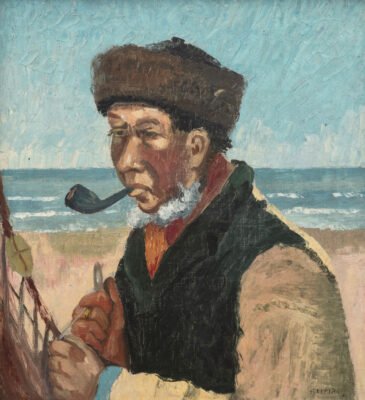The cross-generational show at Odense’s Brandts Museum places the likes of Nan Goldin, Robert Mapplethorpe, and Sven Marquardt alongside young, emerging photographers
Since the birth of photography in the mid-1800s, the camera has been used to document desires deemed socially unacceptable, or even illegal, and to share moments of love in a physical form that can be carried in pockets and purses. Especially among queer communities, “the photograph [has been] a kind of silent resistance,” says curator Marianne Ager, and a powerful tool for self-expression. “A very touching and beautiful fact, I think.” This also made photography the perfect medium for a new exhibition, titled Love, Lust, and Freedom, at Odense’s Brandts museum.
Surprising as it might seem, Love, Lust, and Freedom is the first major photo exhibition in Denmark with queerness as its organising theme. To some extent, this lack of representation reflects the broader existence of LGBTQ+ people in the country, Ager suggests. “I think, in general, we like to consider ourselves a free- and open-minded people here in Denmark,” she explains, “and compared to many other places in the world there is no doubt that queer people have been given both space and rights.”
“Having said that, there is plenty of intolerance hiding just below the surface. It makes a lot of people uncomfy if you stand out too much – or just a bit – from the crowd. The fact is, queer people in Denmark experience harassment and hatred and prejudice on a daily basis.”
Around the world, though, Ager had started to witness a blossoming of queer photography in the public eye, both online and IRL, via galleries and art fairs. “It was as if an underground phenomenon began to insist on being allowed to take up space.” This “artistic insistence” comes to the fore in Love, Lust, and Freedom, via the work of international heavyweights such as Wolfgang Tillmans, Robert Mapplethorpe, Nan Goldin, and Sven Marquardt, but also young and emerging photographers such as Donal Talbot and Denmark’s own Birk Thomassen.
“From the start, the ambition was to create an exhibition with very diverse artistic voices from different generations,” she says. See: Marquardt’s kinky, leather-bound portraits from the mid-80s across from a poppers-themed still life by Talbot, or subversive takes on manhood by Marvel Harris beside Florian Hetz’s explorations of the flesh.
Not only does this create a “very special and enormously inspiring energy” in the exhibition space – it also helped to foster an international, intergenerational community of artists, many of whom played a large role in the show’s curation, and met for the first time at its recent opening.
As an institution, Ager says, it’s important for the Brandts to relate to a diverse, changing world – and what’s happening in its own back yard – and to create free spaces for art to “reflect, understand, and ask questions” about the self and about other people. At its root, she says, this is the purpose of Love, Lust, and Freedom: “The exhibition is intended as the start of a conversation.”
Love, Lust, and Freedom runs at the Brandts museum in Odense until January 5, 2025.






